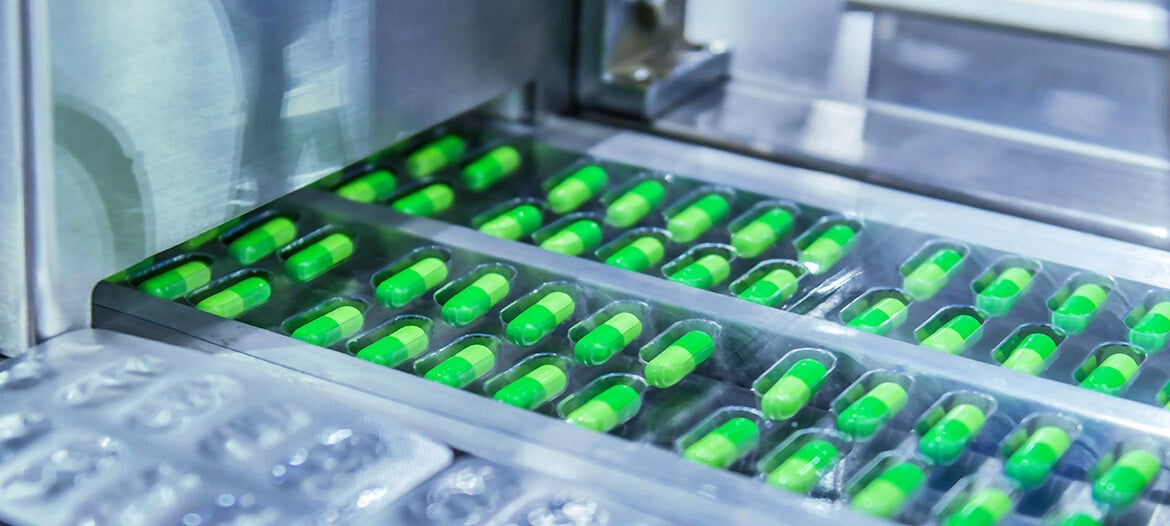Warehouse Mapping of GxP Storage Facilities — Not Optional
When your warehouse stores temperature sensitive pharmaceuticals and life science products, a top of the line HVAC system with carefully placed thermostats is not enough to ensure product quality and consumer safety. Why? It is the nature of warehouse facilities, no matter the size, to experience temperature gradients.
Organizations for regulatory guidelines and industry standards, such as the FDA, ICH and USP, have recognized that the storage and distribution of these critical products require businesses to take a risk-based approach to their operations. How is this accomplished? Temperature mapping. And it’s not an option; it’s mandatory for compliance, and this article covers the basics of what you need to know.
Why It’s Critical to Map Spaces
Temperature inconsistencies are created by factors such as door openings, skylights, sun-facing walls and high-bay shelving, which in return can create the temperature gradient areas and hot and cold spots in even the most carefully designed facilities. Consider this scenario: the racking system that stores your inventory of hydrocortisone cream is located directly under overhead lighting. The temperature on the top shelves reaches above 35 °C at times due to the heat that naturally rises and warmth generated by the overhead lamps. Pharmaceutical products, like hydrocortisone creams and many others, can become ineffective, or even worse, potentially dangerous, once exposed to inappropriate temperatures.
Humidity can also play a factor. What if a pallet of glucose testing strips is stored against an outside wall near the heating vents and condensation and humidity develops in this area? High humidity levels can threaten the effectiveness of those diagnostic strips. These types of scenarios are very real, and can go unnoticed without warehouse mapping.
So even though your thermostat is set to constant temperature and your continuous monitoring probes might even be located nearby, simply the combination of those is not enough. So, how does mapping come into play? A warehouse mapping exercise will take a risk-based approach to evaluate the temperature and humidity distribution and the impact of daily activities (such as door openings) to qualify the thermal stability of your facility setup.
Mapping Regulations
Mapping is essentially the recording of climate conditions in a three-dimensional area to identify where various products should and should not be stored. Although regulation bodies differ by country, it is consistently recognized that equipment and processes should be respectively qualified and /or validated before commencing use and after any significant change (such as repairs or maintenance), and temperature mapping is the appropriate way to thermally qualify your warehouse.
According to USP Guidance <1079>, observation of the temperature in a warehouse is used to establish a meaningful temperature profile, and "the size of the space, location of space heaters, sun-facing walls, and geographic location of the warehouse," should all be taken into consideration when mapping a warehouse / storage facility. "Observation of the temperature variations in a warehouse should be made over a period of time to establish a meaningful temperature profile, including the temperature variations and conditions in different parts of the warehouse."
The study should be conducted long enough to show trends, and industry standards conclude that conditions should be recorded for a minimum of three consecutive days. You should take into consideration when your facility will experience extreme thermal impacts. For example, some operations are conducted during the week only, and the facility shuts down completely Friday evening. During the week, there is plenty of thermal energy in the building created by activities such as door openings, operations and fork trucks. If that is the case, consider beginning your mapping on a Friday afternoon until Monday. You will receive thermal data during regular operations, close down and start up.
So You Have Decided to Map Your Storage Space, Now What?
First, define acceptance criteria (i.e. acceptance criteria is stated as +15 °C..+25 °C and ±5 °C is noted to allow for excursions). Then, collect data about the critical components of your facility, including blueprints, dimensions, racking systems/organization system locations, HVAC plans and insulation materials. Also, take into consideration the areas of risk (i.e. areas that may experience environmental fluctuations).
Once you analyze your space, then you can determine the number of data loggers you will need. Temperature and humidity data loggers should be setup strategically in a uniform pattern throughout your facility. As you collect information, write your protocol, which will include acceptance criteria, will specify the number of data loggers, data logger locations, data acquisition intervals and study duration.
Now that you have an overall plan, you will need to buy data loggers, program them, place data loggers and start them. After temperatures are recorded for several days, collect your data loggers. Each measurement point will need analyzed and pulled into a report with calibration certificate information. Once your reporting is ready, you can draw conclusions based on the summary.
Mapping Examples in Practice: Re-Mapping, CAPA’s and Outsourcing Considerations
Express Scripts / CuraScript, one of the country’s leading healthcare service companies, recently performed a mapping exercise at their facility because the medication they distribute has storage requirements of +20 °C..+25 °C (68 °F..77 °F).
"We needed to ensure that we were meeting this requirement at each pallet location in the warehouse that the medication was stored. This was the first time we did a mapping. We suggest doing a mapping exercise if there is a change to the building that would cause a temperature change."
Keith Konya
(Sr. Manager of Facilities Express Scripts / CuraScript)
New facilities must always undergo a mapping exercise, but there are instances that lend to a re-mapping of facilities, and these include: HVAC modifications, significant warehouse layout changes, extensions to facilities and sometimes even new product lines will warrant a mapping exercise. For example, an HVAC modification can be as simple as changing thermostat setpoints.
"Set HVAC units to the middle of the temperature specification and leave them at that setpoint year-round," Konya suggests.
"If the facility is mapped and adjustments are made later to the HVAC setpoints, the mapping will be invalid."
Although it’s not mandatory, you will receive the most comprehensive study of your warehouse mapping when it is performed under the most extreme weather conditions, winter and summer, to understand how seasons affect storage environments. This is because storage locations near outside doors, walls and ceilings are particularly sensitive to the exterior climate. Additionally, extreme temperatures will affect how your HVAC system performs.
By taking this risk-based approach to your storage area, you will be able to identify risk areas and make appropriate changes needed to the hot and cold spot problem areas, implementing a CAPA (Corrective And Preventative Action) approach to your operations.
«We have made some corrections as a result of the winter mapping,» Konya said.
"We identified three hot spots which were caused by heaters blowing directly on pallet locations. The heaters have been repositioned as well as pallet locations removed from service."
In addition to making the appropriate changes to your storage location and being compliant, now you can determine where monitoring probes are best served for your continuous monitoring system.
Not every facility has the proper know-how and ability to dedicate resources for planning, managing and analyzing an entire mapping process, and that is okay.
Konya said,"Our knowledge about temperature mapping was limited."
So what did they do? Express Scripts / CuraScript engaged with ELPRO to perform the mapping for them. If you decide to outsource the project, do your research and partner with a company that has consulting experience and specific warehouse mapping / qualification services per GMP / GDP requirements.
Conclusions
Warehouse and storage mapping is essential to being GxP compliant in the biotech, healthcare and pharmaceutical industries. By properly mapping your storage facilities, you are ensuring patient safety and product quality by addressing issues before they happen.
If you want to learn more about partnering with ELPRO on your mapping project, please contact us. Our staff of technical experts is available to answer any questions, assess your application and provide a recommendation and solution.
For example, figure 1.1 demonstrates the traditional mapping process versus a mapping process when you work with ELPRO consultants. It is important to note that there are other requirements for buildings and facilities used in the holding of drug products, as defined in FDA CFR 21 Sub-chapter C Part 205 and 211, subpart C. It is important for patient safety to address these requirements, and it is important for pharmaceutical companies and regulatory bodies to have documented proof that these requirements have been filled.
Learn more by reading our other facilities blog post “Is Temperature Mapping All I Need to be Regulatory Compliant?” which addresses a risk based, fully GMP compliant, properly documented method to comply with the FDA requirements.
References
-
United States Pharmacopoeia Chapter <1079> Good Storage and Distribution Practices for Drug Products; Packaging, Storage & Distribution Expert Committee, Pharmacopeial Forum Volume No. 30(6)
-
European Commission’s Guidelines on Good Distribution Practices (GDP) (2013/C 343/01)
-
FDA eCFR Title 21, Sub-chapter C, Part 211 Subpart C Figure 1.1
Figure 1.1
Traditional mapping process

Simplified process with ELPRO's Thermal Mapping Service

 Warehouse and Cold Room Monitoring Guide
Warehouse and Cold Room Monitoring Guide
Get the tools to ensure your processes and products are compiant and safe.
DOWNLOAD THE PRACTICAL GUIDE







Leave a Comment